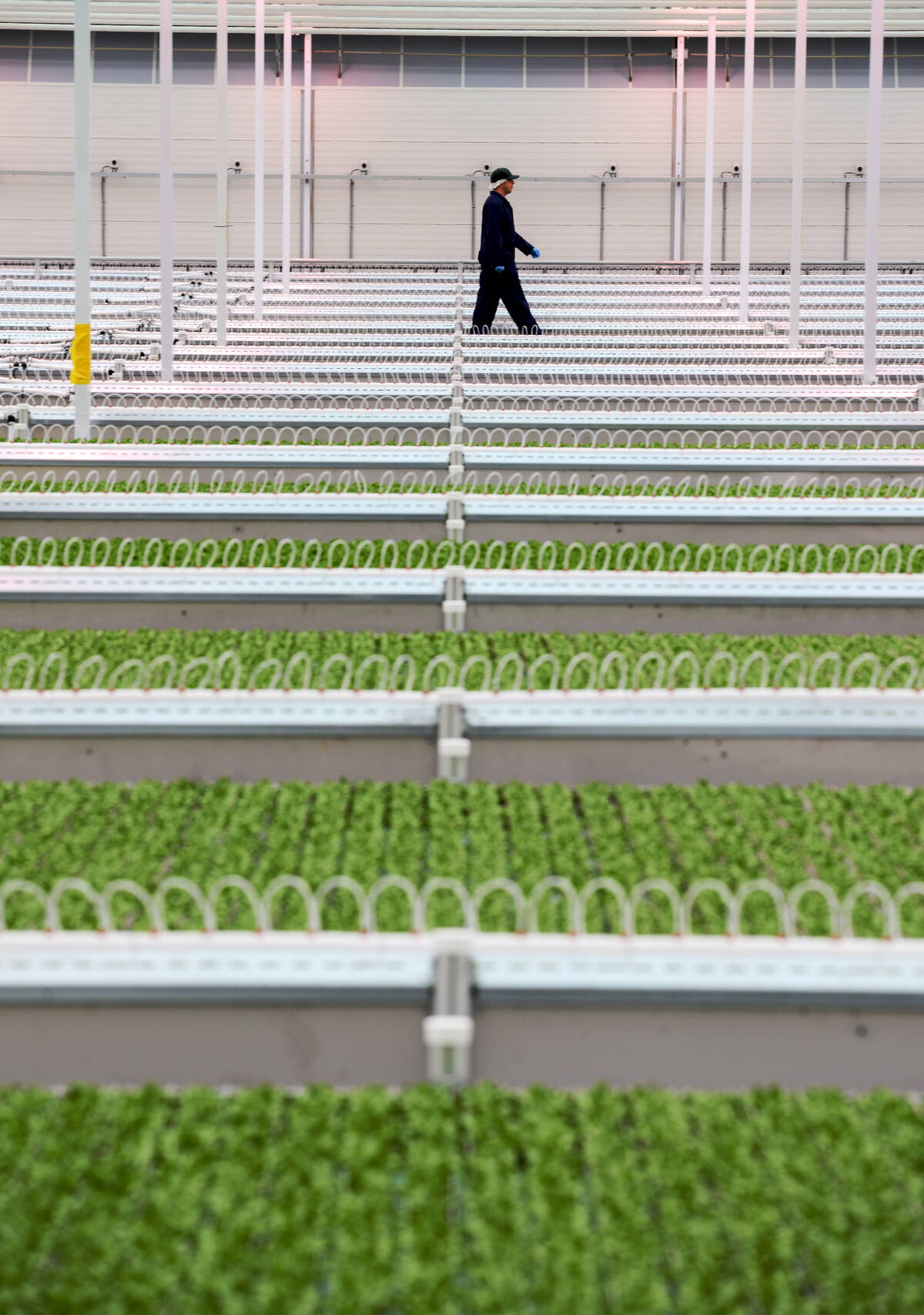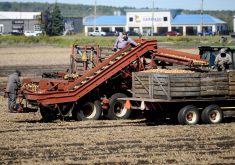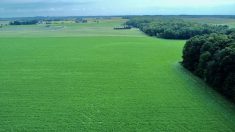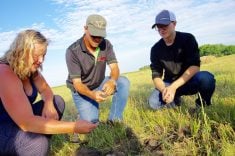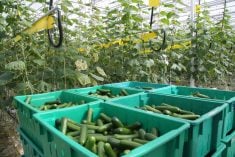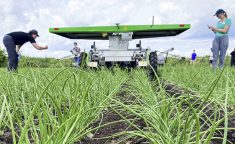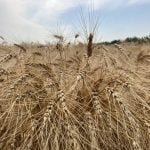Haven Greens, Canada’s first fully automated AI-powered greenhouse, tackles food security, sovereignty, sustainability and Canada’s over-reliance on United States produce.
Why it matters: A report from York University states that 90 per cent of Canada’s leafy greens are imported from the U.S., primarily from California, which exports 87 per cent of its lettuce crop to Canada.
Jay Willmot, founder and CEO of Haven Greens, said the United States’ tariff war boosted local demand that Canada’s domestic supply was unable to meet, helping the King City company’s high-quality, pesticide-free leafy greens reach the market.
Read Also

Conservation Authorities to be amalgamated
Ontario’s plan to amalgamate Conservation Authorities into large regional jurisdictions raises concerns that political influences will replace science-based decision-making, impacting flood management and community support.
“There’s a huge appetite (for local products) and I think it requires not just us, but a number of people to step their game up to do what we need in Canada,” said Willmot.
In return, Haven Greens managed to accomplish in months what other growers take years to do, including a five-acre expansion.
Shift to produce
Willmot is familiar with hard work and building sustainable agricultural opportunities, earning an undergraduate degree in finance and commerce from Dalhousie University before simultaneously completing a master’s in environmental studies and a law degree at York University.
Following his thorough review of the family’s Kinghaven Farms business, it shifted from horse breeding and racing to sustainable agricultural pursuits, including Haven Greens, five solar farms, an apiary and small-batch products.
“(Five acres is) big enough to produce upwards of, if not in excess, depending on where we get on our optimization, around two million kilos per year, maybe a little more than that,” he said.
With 17 of the 20 lines in production, Haven Greens has outpaced its expected model outcome for 100 kilograms per square metre per year.
Willmot said the political climate helped their market entry, but weather, pest issues, inflation and tariff disruptions highlight Canada’s reliance on imports and its potential to boost domestic greens production with government policy support.
Recently, the Canadian Food Inspection Agency (CFIA) announced temporary import licence conditions, effective from Sept. 25 to Dec. 17 for U.S. romaine lettuce sold in bulk, bags or mixed in fresh form due to Canadian E. coli outbreaks linked to California’s Salinas Valley, including Santa Cruz, Santa Clara, San Benito, and Monterey regions. Importers of romaine or salad mixes containing romaine from the U.S. must declare their origin from these California areas and provide an attestation form and certificates of analysis confirming no detectable E. coli levels O157:H7.
Hands-free production
Dominick DiMucci, Haven Greens’ director of cultivation, said they provide customers with the freshest, hands- and pesticide-free product possible through an efficient soil-to-shipping process.
The Mobile Gully System (MGS), a Finnish technology, guides gutters through the cultivation stages using a series of conveyor belts, robotic arms, and RFID scanning technology that tracks each trough throughout the system.
The upcoming expansion duplicates the current five-acre greenhouse on the west side of the technical corridor, allowing smooth integration with existing automation. “We have over 40 employees,” he said during a recent visit to the greenhouse. “Replicating the greenhouse and converging on a central location allows us to have our now, already trained employees be able to go back and forth and manage both without having to take the head count up too significantly.”
The gutters hold approximately 240 red and green lettuce seeds and 1,000 arugula and mustard seeds for the spring mix. After two days in the germination chamber, the gutters are gently shuffled along into the precisely climate- and lighting-controlled growing environment. The red and green leafy greens mature over 24 to 25 days, while the flavour varieties require 13 to 14 days before harvest.
DiMucci said it’s a one-to-40-acre ratio compared to outdoor production, with far less loss due to weather and pest pressures and a comparable price point at the register.
The pack-hall conveyors measure gross and net weight, enabling real-time yield tracking with camera sensing technology in development to gather germination rates and other data points, said DiMucci.
It takes 20 seconds per gutter to harvest with the conveyor moving constantly to ensure the mixed greens are distributed evenly before being packaged in three- and five-pound bags for food service and four- and eight-ounce clam shells for retail. Only after it’s packaged will the product be touched by human hands.
“From experience, the shelf life holds up much stronger than that,” he said. “The crispy green leaf has been good in my fridge for over two months. Obviously, for safety reasons, we settled on 18 days.”
Sustainable production
Haven Greens employs natural biological pest management both internally and externally, using a pollinator-friendly buffer zone that supports Kinghaven Farms’ 250-colony apiary and provides insect habitat around the operation’s solar farm.
“When you stimulate that type of biodiversity (and) ecological regeneration, carbon neutrality doesn’t become a challenge, in some cases, it’s an overall net carbon sink,” explained Willmot, adding that Haven Greens is on track to be carbon neutral by 2027.
The closed-loop water filtration system reduces water consumption by 90 per cent. It features a five-day water supply from an 85,000-gallon tank fed by rainwater, snowmelt, a pond, a well and a stormwater management pond. The water treatment uses a 50-micron mechanical filtration system and UV bulbs to sterilize and remove pathogens, bacteria, and viruses.
Output water is routed to a wastewater pond for recapture, where it undergoes a reverse osmosis process.
“We take the sustainability aspect seriously,” DiMucci said, adding that production wastewater recycling isn’t commonplace. “Sure, hydroponics, you’re recirculating your solution, but taking it that one extra step to capture that water is important to us.”
Nutrients are recycled on a similar scale and the construction of a topographic biofilter will provide ecological regeneration qualities similar to a wetland.
By leveraging Haven Greens’ model, Willmot can demonstrate to Ontarians and Canadians how integrated energy, food, and agri-tech can benefit people and promote ecological regeneration and biodiversity.
“This is the future,” said Dr. Rozita Dara, director of Artificial Intelligence for Food (AI4Food) at the University of Guelph. Dara specializes in smart farming and AI adoption to simplify food production.
She said aside from the initial environmental impact of training new AI systems, the technology optimizes resources, improves water, energy, and fertilizer efficiency, decreases waste, and minimizes the environmental footprint.
“Everything is moving towards bringing the cost down and that could enhance adoption,” Dara explained, adding real-life farm testing ensures the technology meets a need and allows farmers to build trust. “The AI is very good at tasks that you can do with high precision, that you can repeat, like identification of weeds.”
AI tackles labour challenges, shifting the industry from dependence on low-skilled workers to a need for a highly skilled workforce with increased focus on cybersecurity and scalability to meet agricultural demands.
“We shouldn’t rely on these tools completely; we want to still keep our knowledge and skill in case something goes wrong,” Dara cautioned. “What if there is a (cyber) attack and the entire system is disrupted? Do we still have the knowledge, the skills to operate in the absence of these technologies?”
DiMucci is quick to argue that “we’re farmers at our heart,” who leverage technology to scale food production without massive staffing and land investment, and create an industry entry point for younger farmers.
If we wait 30 years until the current generation of farmers retires to address the shortage of new entrants, it will be too late, agrees Willmot. The industry needs redevelopment now to increase the number of farms because Ontario isn’t producing enough food in any category.
“Part of our mission here is to train those farmers in the future, to rebuild that industry,” said Willmot. “And through programs like the Just an Acre Program, recycling and upcycling our peat moss, building more farmland, amending dead soils – we’re creating more farms. We’re creating more farmers and therefore creating more food.”


